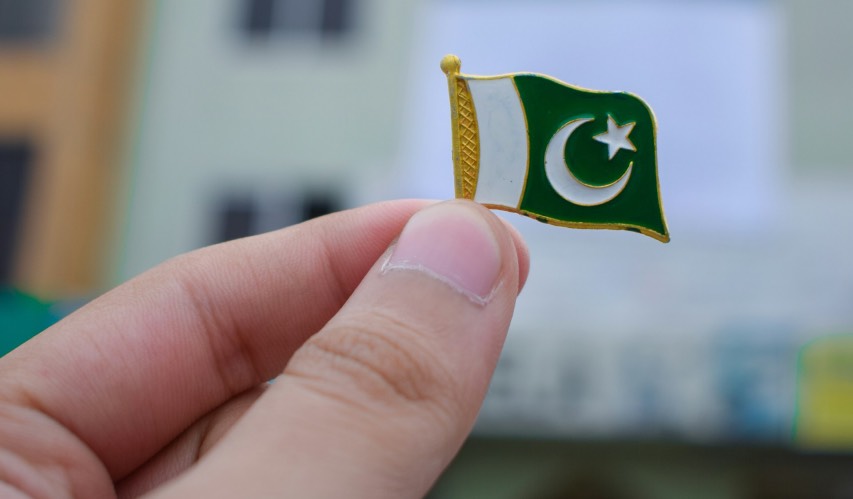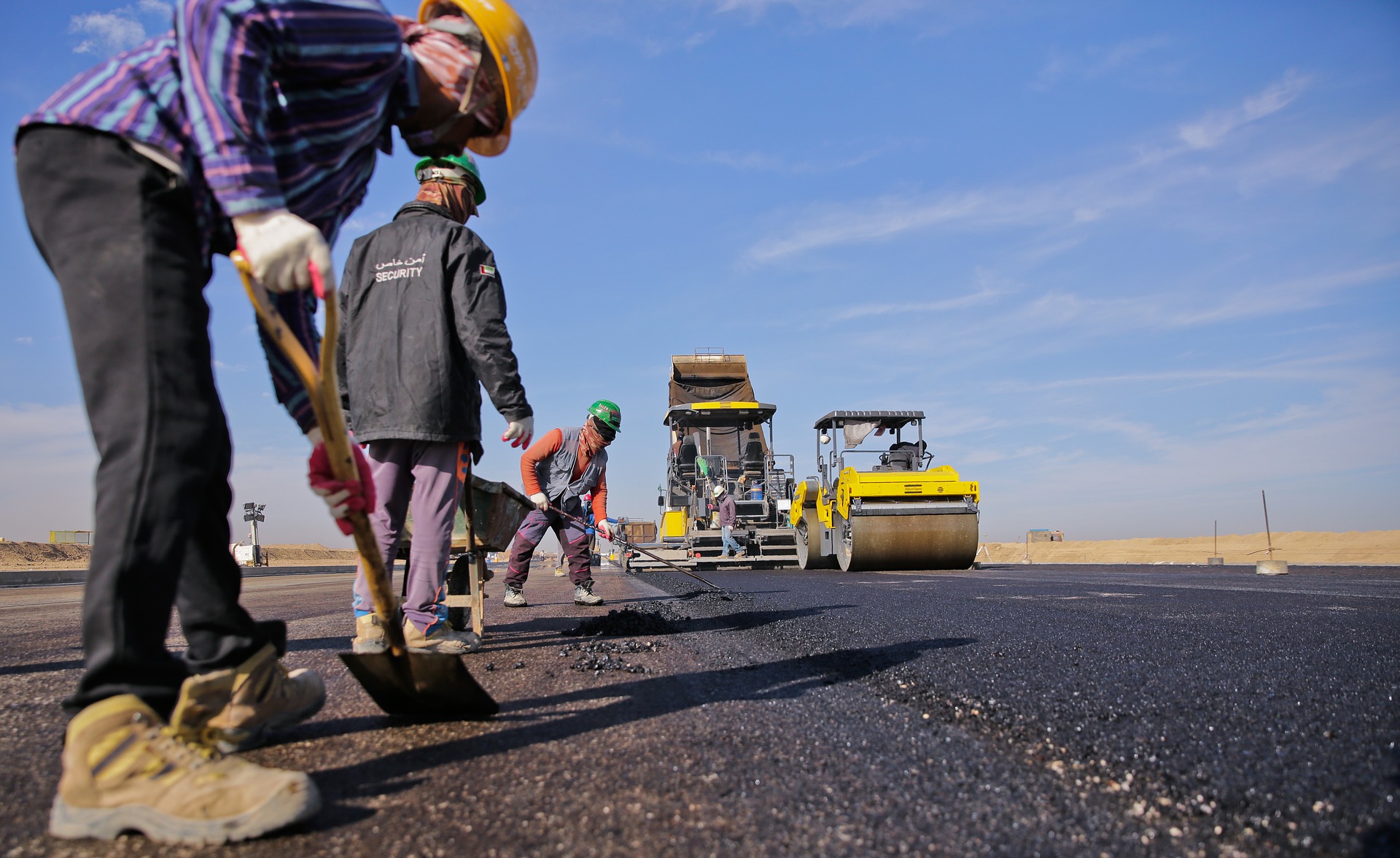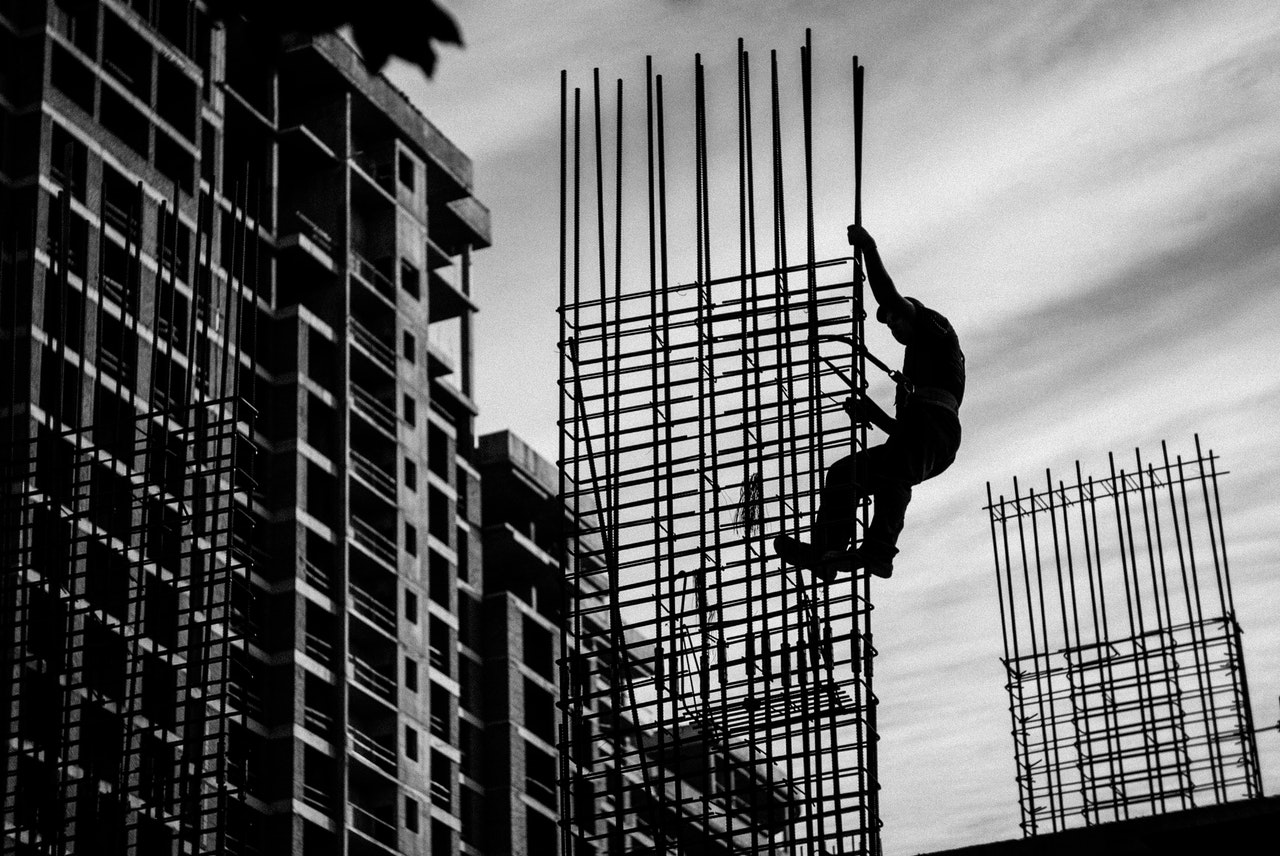LSE Editor’s Note: This is the text of the Plenary Lecture by Mr Justice Athar Minallah at the LSESU Pakistan Development Society’s annual ‘Future of Pakistan 2024’ conference, delivered at LSE on 3 February 2024. Editorial changes are marked with [square brackets]; all hyperlinks have been added by the Editor per usual practice for the convenience of the reader. A video-recording of the lecture is available here.
It has been rightly assumed that there is a constitutional crisis [in Pakistan]. Is it a recent phenomenon? The answer is an emphatic ‘No’. The unpacking of the constitutional crisis before a young audience either imbued with idealism and hope or cynicism and despair requires courage to acknowledge faithfully the failures and successes in managing the affairs of the country. Regrettably, for the last 76 years the truth has been suppressed — which suppression of truth had also led to the dismemberment of Pakistan [in 1971]. As I will explain in more detail, we did not learn from history, despite the deep scar left by the cessation. We will be failing in our duty if we do not make you aware of the challenges to expect when you take over the reins to guide and carve the future of the country.
We cannot unwind the past nor erase the history. Unpacking the constitutional crisis inevitably requires analysis of the constitutional history from the very inception of Pakistan [in 1947]. It is indeed not an enviable task for a judge of the Supreme Court because neither the constitutional history nor the role of the Supreme Court is flattering. We must realise that as a nation we are at a critical crossroads, and we do not have the luxury to pretend that all is well nor to suppress our mistakes. The truth is bitter but it must be told so that mistakes are not repeated.
*
Unpacking the constitutional crisis will take us back to barely ten days after the creation of Pakistan when the first precedent of derailing democracy was set by the dismissal of Dr Khan [Sahib]’s government by the Governor of the then North-West Frontier Province [NWFP]. On 22 August 1947, the dismissal of a government which had a clear majority was followed by the suppression of dissent when more than 600 peaceful protestors of [the] Khudai Khidmatgars were gunned down in Babara.
This precedent was the beginning of a long, dark saga of constitutional crisis which has [continued] unabated for the past 76 years. The formative years were critical because they were to decisively shape the destiny of the new nation. Ironically, the opportunity was lost. The most credible account of the events and causes that facilitated the derailment of constitutionalism has been eloquently recorded by late Air Marshal [M.] Asghar Khan in his book titled We’ve Learnt Nothing from History: Pakistan – Politics and Military Power (2005).
‘This is what happened in Pakistan. It lost its founding father and guiding figure, Mohammad Ali Jinnah, barely a year after its creation. Three years later, when it had hardly overcome the pangs of birth and was still in the throes of a host of problems, including the absence of a consensus on a constitutional framework, it lost its first prime minister, Liaquat Ali Khan, through the bullet of an assassin. This development brought to an abrupt end the little supremacy that the political leadership had over the bureaucracy and the army. This situation thus paved the way for a painfully long series of traumatic developments that left their scars on the body politic of the country, unleashing the forces of adventurism and palace intrigues. However, Pakistan had a few special features that further complicated the picture. The armed forces, or about 85 per cent of them, belonged to one province of West Pakistan, the Punjab, whereas the majority of the population was in East Pakistan and had virtually no representation in the armed forces. The situation vis-à-vis the bureaucracy was about the same. Whereas the army takeover, when it first happened, was generally accepted by the Punjab, it was resented in East Pakistan. To the various anti-democratic decisions taken by the rulers sitting in Karachi and later in Islamabad, the reaction of East Pakistan was different from that of the western wing for a number of reasons.
[…] The restraint that East Pakistan exercised on unbridled dictatorship was a factor which led those who supported these regimes to feel that they would be better off without the eastern half of the country. For such people, East Pakistan was an encumbrance. The ruling class of West Pakistan, therefore, conditioned itself to believe that Pakistan would do better without its eastern wing.
The involvement of the army in active politics goes back to the mid-1950s. The martial law of 1953 in the Punjab gave the army its first taste of power and it discovered that it could control seemingly unruly mobs with the power of the gun. Ayub Khan’s ambition, which was the normal response of a general in a classic situation, received encouragement from Ghulam Mohammad, the governor-general. A bureaucrat to the hilt, Ghulam Mohammad neither believed in democracy nor in equal treatment for East Pakistan. He dismissed Khawaja Nazimuddin, the prime minister, in April 1953, when Nazimuddin commanded a majority in the Constituent Assembly which had just passed the annual budget. This was the first major blow to democracy and it could not have been struck without the tacit support of Ayub Khan, the commander-in-chief of the army.
[…] The civilian governor of East Pakistan, Chaudhary Khaliquzzaman, who could not agree to the dismissal of the United Front ministry of A.K. Fazlul Haq in Dhaka, was removed and replaced by General Iskander Mirza. The governor’s rule was clamped down over the province. Encouraged by his arbitrary actions against the central and provincial governments, which remained unchallenged, Ghulam Mohammad chose in October 1954 to dissolve the Constituent Assembly which had just prepared a draft constitution restricting the governor-general’s powers. The constitution contained a clause which provided that the governor-general could not dismiss a ministry as long as it commanded a majority in the House. Ghulam Mohammad, who by then had suffered a series of strokes, was very ill but not too ill to destroy any remaining semblance of democratic propriety in the running of the country’s affairs. Moulvi Tamizuddin Khan, the president of the Constituent Assembly, challenged the dissolution of the Constituent Assembly in the Sindh High Court, which gave a verdict in his favour and against the action of the governor-general. However, the appeal of the governor-general against the decision of the High Court was upheld by a majority judgment of the Supreme Court delivered by Chief Justice Mohammad Munir.
[…] The bureaucracy-military collaboration was thus total and complementary. Despite their rivalries, both needed each other; the bureaucracy wanted the military to lend it support while the latter sought the skilled and adroit assistance of the former in elbowing out the professional politicians who were relegated to the status of junior partners. It was, therefore, not surprising that a half-dumb, half-paralyzed Ghulam Mohammad ruled the country for more than a year.
That the generals deemed it necessary to mould the national politics to suit their whims and interests is evident from a significant development of those days.
[…] A large number of politicians, most of whom claimed to have worked for the freedom movement, allowed themselves to be used as puppets by the bureaucracy-military clique only to share power as junior partners.’ [pp 8–11]
The mindset of the ruling élites described by the Air Marshal was affirmed by the former Chief Justice Muhammad Munir who had upheld the dismissal of the Constituent Assembly and legitimised its consequences through anti-democratic theories of legal technicality, and by contriving the doctrine of necessity, later legitimised the first Martial Law [of General Ayub Khan in 1962] through the doctrine of ‘coup d’état legality’, and then after retirement served the legitimised usurper as a member of his cabinet. He had the audacity to describe the then mindset in [his] book titled [From] Jinnah to Zia [1979?], and I quote:
‘When in 1962 I joined Ayub’s Cabinet for a short time I found that no constructive work was being done by the Assembly. Every day was spent in listening to the long speeches of East Pakistan members of exploitation of East Pakistan and the step-motherly treatment of that province. Ayub used to listen to these speeches on the radio and was bored with what was happening as none of the ministers or members of the Assembly, whether from East Pakistan or West Pakistan, rose to rebutt these allegations. I spoke to Ayub and suggested that there could be no fusion between or common goal between the two provinces and asked him whether it would not be better that instead of putting up with this nonsense, to ask East Pakistan to take their affairs in their own hands. He suggested to me that I should talk about it to some influential leader from East Pakistan. One day while I was talking to Mr. Ramizuddin who had been a Minister in Bengal or East Pakistan I broached the matter to him. His reply was prompt and straight. He asked me whether I was suggesting secession. I said yes or something like it as confederation or more autonomy. He said ‘look here we are the majority province and it is for the minority province to secede becuase [sic] we are Pakistan’. The matter ended there and complaints in the Assembly continued as before.’ [pp 92–93]
These facts have been stated by those who were not just witnesses of the brewing of the constitutional crisis but were also part of the clique that ruled Pakistan in its formative years.
The cessation [of East Pakistan in 1971] had become inevitable a decade before it had become a reality. Justice Munir, according to his own admission, was rebuked by the patriotic politicians belonging to East Pakistan when something similar to cessation was suggested to them. In 1971, the constitutional crisis created by the ruling élite had dismembered Pakistan and at that darkest moment the reins of power were held by another legitimised usurper, General Agha Mohammad Yahya Khan. It was inconceivable that lessons would not be learnt from the worst that could have happened to a nation; the cessation of [a part of ] the country.
However, the civilian political leadership realised the need to set out a workable framework for governing the country, and in 1973 they displayed political wisdom by agreeing to promulgate [a new] Constitution of the Islamic Republic of Pakistan. The foundational principle of the Constitution was civilian supremacy and the political right of the people to participate in the governance of the country through their chosen representatives.
The Constitution was to be the supreme law. It guaranteed freedoms and rights to the people and bestowed public powers upon the government and public office holders to enable them to fulfil their duty of protecting those rights. The public power could only be exercised to enable the people to enjoy their freedoms and guaranteed rights. At this juncture, the Provisional Constitutional Orders issued by General Yahya Khan were declared to be of no legal validity by the Supreme Court in the Asma Jilani case (PLD 1972 SC 139), [a] landmark verdict [that] had preceded the promulgation of the Constitution. One of the judges on the bench, Justice Muhammad Yaqoob Ali [Khan], as he then was, observed that judges could not violate the oath they had taken to defend, preserve and protect the Constitution and declare that because of the superior will of the usurper they have been relieved from their obligations. It was further observed that the people and the courts are silenced temporarily through the coercive apparatus of the State, but the order which the usurper imposes would remain illegal and the courts will not recognise the rule and act upon them as de jure. It was emphasised that ‘as soon as the first opportunity arises when the coercive apparatus falls from the hands of the usurper, he should be tried for high treason and be suitably punished. This alone will serve as a deterrent to would be adventurers.’ The usurper whose actions were declared void was never tried.
The Asma Jilani judgment was handed down in March 1972, and it was followed by the promulgation of the Constitution on 12 April 1973. Article 6 defined the offence of high treason which was punishable to the sentence of death or imprisonment for life. Did it create a deterrence or bring the constitutional crisis to an end? This was answered by former Chief Justice Mohammad Munir in his memoirs [Highways and Bye-Ways of Life, 1978] in these words: ‘But despite [the] Asma Jilani [case], Martial Law came twice and we are still under Martial Law. No judgment of a court of law has ever prevented future changes in the society or the coming fortunes or misfortunes of a country ….’ [p. 267]
On 5 July 1977, less than five years from handing down of the judgment in the Asma Jilani case, another usurper, General Zia-ul Haq, abrogated the Constitution. The judges of the Supreme Court preferred to become collaborators of the usurper by purportedly legitimising the high treason and declaring it as a ‘revolution’ and a ‘new order’ through the judgment in the Begum Nusrat Bhutto case (PLD 1977 SC 657). He [General Zia-ul Haq] was also given the power to amend the Constitution. Justice Dorab Patel, who was also a member of the bench, later lamented giving the Chief Martial Law Administrator the power to amend the Constitution. The unconstitutionally deposed elected Prime Minister [Zulfiqar Ali Bhutto] was sent to the gallows. The fairness of the trial and subsequent dismissal of his appeal by the Supreme Court remains questionable. In the words of Justice Muhammad Yaqoob Ali, an omnipotent sovereign ruled over the recipients of the delegated sovereignty, the people ‘in a similar manner as the alien commander who has conquered a country and his will alone regulates the conduct and behaviour of the subjugated populace’.
On 12 October 1999, yet another usurper, General Pervez Musharraf, abrogated the Constitution and all the judges of the Supreme Court (except five) preferred to collaborate by purportedly legitimising his act of high treason through the Syed Zafar Ali Shah case (PLD 2000 SC 869). No one was tried for the offence of high treason.
On 3 November 2007 the legitimised usurper struck the very institution that had granted legitimacy to his action of abrogating the Constitution. Some judges were detained while others preferred to violate their oath by swearing allegiance to the already legitimised usurper. The historic Lawyers’ Movement inspired the people and the actions were reversed. The judges were restored but I have no hesitation in acknowledging that the role of the restored Judiciary in encroaching upon the domain of the Legislature and the Executive was contrary to the aims and purpose[s] of the historic Lawyers’ Movement. The Parliament’s authority and democratic principles were undermined and civil supremacy was eroded. Belatedly, the legitimised usurper alone was tried and convicted by a Special Court, while his collaborators (who had granted him legitimacy) were pardoned by the Supreme Court. Procuring attendance of the alleged usurper by the special court was frustrated and he was convicted and sentenced in absentia. The function of the offence of high treason to deter serious violations of the Constitution stood frustrated.
The Supreme Court was perceived to have been involved in political engineering prior to the general elections of 2018 which led to the formation of a weak civilian government [which] could not last for more than three years. This period manifested a distinct form of constitutional crisis: the governance was perceived as hybrid in nature, i.e., jointly managed by the elected representatives and the hierarchy of the army, a fact later publicly affirmed by the then Prime Minister [Imran Khan]. The Leader of the House [Imran Khan] refused to acknowledge the legitimacy of the Leader of the Opposition [Shehbaz Sharif]. In order to frustrate the vote of No Confidence, the Deputy Speaker attempted to dissolve the National Assembly.
The Supreme Court intervened by taking suo moto notice and subsequently the vote of confidence went through pursuant to the unanimous judgment of the Supreme Court. Instead of sitting on the Opposition benches, the Leader of the House, who had been removed through the Vote of [No] Confidence, decided to resign along with other elected representatives belonging to the political party. The constitutional crisis was aggravated when two provincial legislatures were prematurely dissolved pursuant to the decision taken by the political party.
The Lahore High Court handed down its judgment but while its implementation was in process, the Supreme Court intervened. Through two separate judgments, the Supreme Court had fixed dates for the holding of general elections. The judgments were not implemented and no attempt was made either by the Supreme Court or the interested parties to have them enforced. The Supreme Court allowed its authority to be eroded. The Constitution was violated repeatedly, and no one was held accountable. The elections could not be held within the 90 days prescribed under the Constitution [for such political situations].
*
It is obvious from our constitutional history that constitutional crisis has remained deeply entrenched since the dismissal of the government in the North-West Frontier Province [in 1947] and continues to persist. The derailment of democracy and the Constitution has persisted throughout the existence of Pakistan. Every person who enters public office or joins the service of Pakistan swears by Almighty Allah to protect, defend and preserve the Constitution but, barring a few, they violate the oath with impunity.
The apparent impunity for the perpetuators for committing serious violations of the Constitution and the guaranteed rights of the people through oppressive, arbitrary and unconstitutional abuse or transgression of public powers has remained entrenched in more than 70 years of our constitutional history, and it has carried on till this day. The memoirs of the judges who have served the institution and the judgments of the Supreme Court [make] manifest [or ‘manifests’] that violating the oath or legitimising the abrogation of the supreme law has never been treated as a sin. If the oath had been recognised as a solemn commitment with the Creator and the people, no one would have dared to violate the Constitution nor deprive citizens of their constitutional rights.
The Constitution unequivocally envisages that the authority of the government is solely premised on the will of the people. The Constitution, which is the supreme law of the land, sets out the fundamental rules and principles agreed upon by the people of Pakistan, and describes how the State is to be governed. It describes the relationship between the State and the people. The edifice of the Constitution stands on the principles of democracy, freedom, equality, tolerance, and social justice. The soul and foundation of the scheme (of the Constitution) is the declaration by the framers [Article 2(A)] that the ‘State shall exercise its powers and authority through the chosen representatives of the people’.
The sole foundational principle of the Constitution is civilian supremacy, which was lost in the initial years. The role of the Supreme Court in facilitating the derailment of democracy and the Constitution is indefensible. The absence of civil supremacy has created a persistent tension, and the Constitution has been subverted since the country has not been governed there under. Political leaderships raise voices in support of restoring civil supremacy only when they are not in power. But when in power, they willingly allow the Constitution to be subverted with impunity by compromising civilian supremacy. Rule of law is eroded when the country is not governed under the Constitution.
The constitutional crisis will continue till the Constitution is made workable by restoring its foundational principle of civil[ian] supremacy. Democracy would not have been derailed and the usurpers would not have ruled for half of this nation’s history, if they were not legitimised by the Supreme Court, nor would the people have suffered. The governance of the country for the last 76 years has been a hostage to the ‘doctrines’ conceived by individuals who were trained in the art of war. These ‘doctrines’ gave us the culture of drugs, Kalashnikovs, violence, and terrorism. They changed the moral fabric of our society. Pride was taken in adopting the despicable phenomenon of enforced disappearances as a State policy. The governance based on [these] ‘doctrines’ has made 95 million citizens suffer by living below the poverty line, a ticking bomb of population growth that threatens the country. The doctrines could not stop the exponential increase in the number of children who are stunted nor help in preventing the deep human capital crisis. For 76 years civilian supremacy has been suppressed but this model has merely created opportunities for élite capture to become more entrenched. The people have been denied their inalienable right to govern the country and carve its destiny.
As a nation we are running out of time and the doctrines must give way for the country to be governed under the Constitution in conformity with its foundational principle of civilian supremacy. The erosion of civilian supremacy has created absolute impunity against derailment of the Constitution and, as judges, we ought to accept that we are responsible. Constitutional violations and deprivation of freedoms and constitutional rights are intolerable. Those who deprive the citizens of their constitutional rights must be held to account. The panacea to the miseries and hardships faced by the people of Pakistan solely rests on upholding the Constitution and making the authorities answerable for the wrongful exercise of public power and transgression.
It is an inviolable duty to put an end to the impunity for violating the Constitution and deprivation of constitutional rights. No one, not even the judges, are above the law or immune from being held accountable. The ruling élites have experimented and have governed the country for 76 years by adopting different models, from dictatorships to hybrid models but have not given the people a chance to rule and govern by and under the Constitution. History beseeches us that our ruling élites must now accept that a Pakistan governed in violation of democratic constitutionalism expressly envisaged under the Constitution will only perpetuate constitutional crisis and, inevitably, further add to the instability and erosion of rule of law. Refusing to acknowledge the reality is no more an option. Your generation is not only the hope but an assurance for restoring the status of Pakistan amongst the comity of nations which it deserves.
*
The views expressed here are those of the author and do not represent the views of the ‘South Asia @ LSE’ blog, the LSE South Asia Centre or the London School of Economics and Political Science. Please click here for our Comments Policy.
This blogpost may not be reposted by anyone without prior written consent of LSE South Asia Centre; please e-mail southasia@lse.ac.uk for permission.
Banner image © Abuzar Xheikh, 2019, Unsplash.
*







